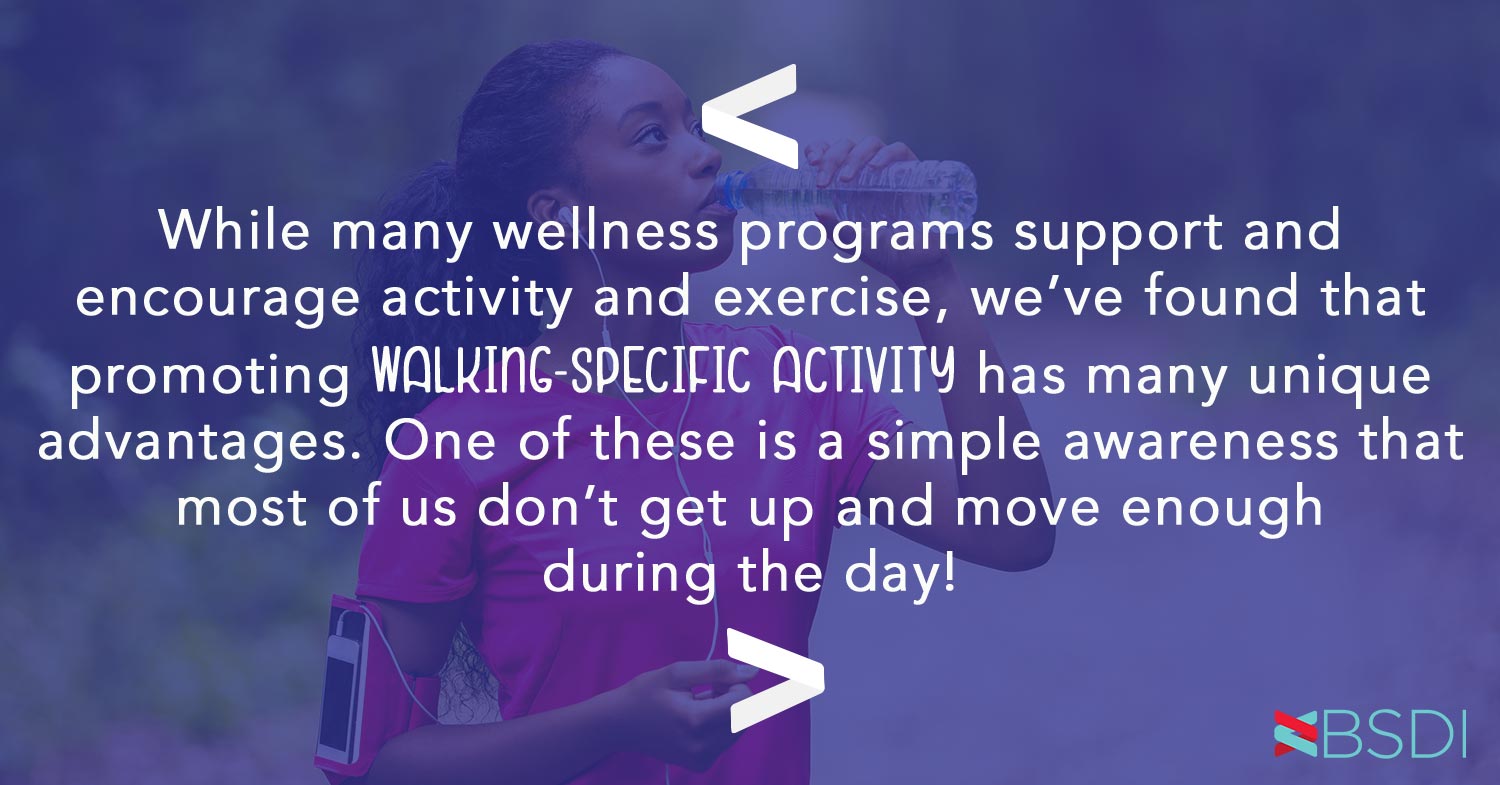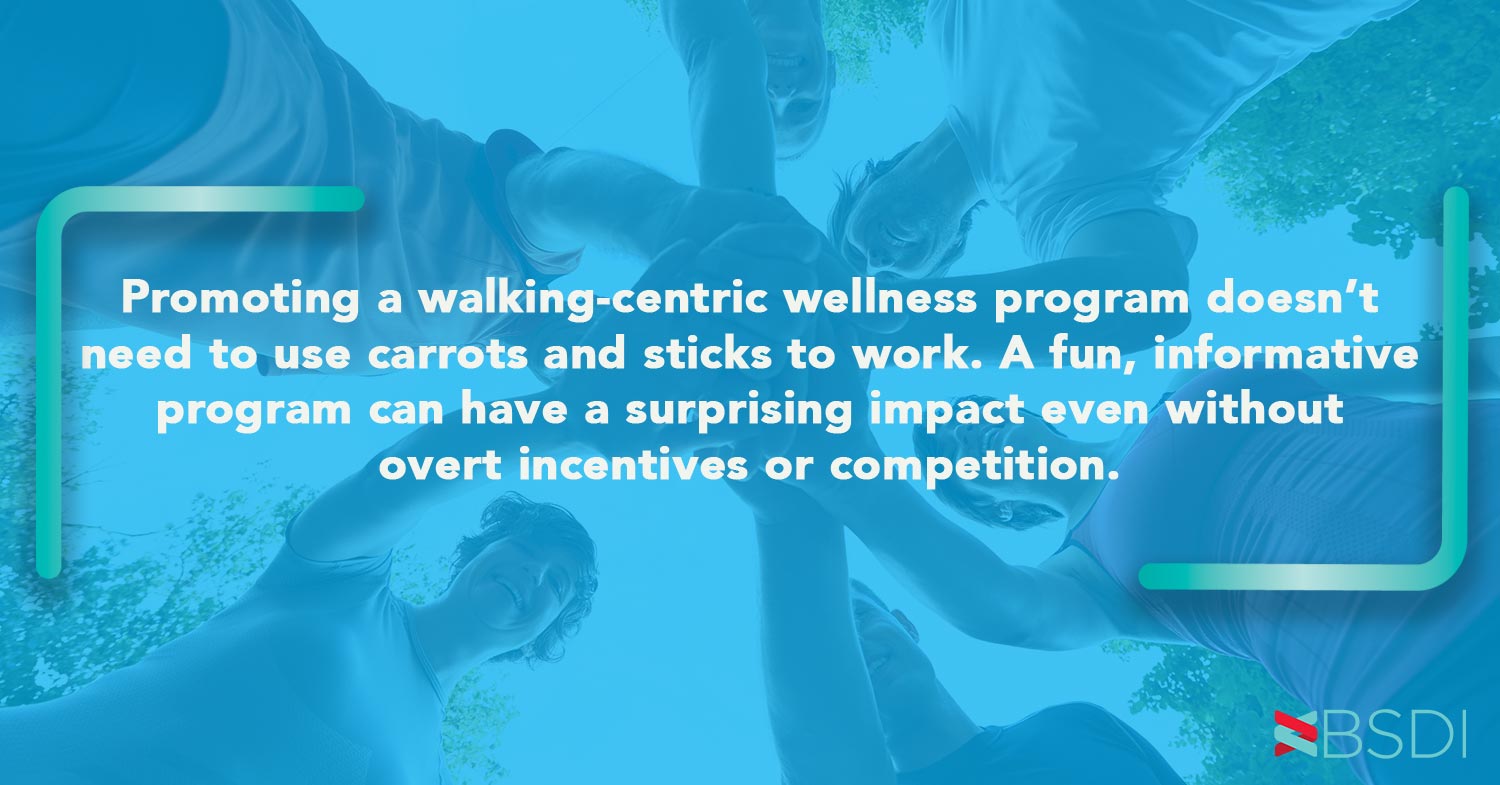
As a wellness or fitness professional, you are likely aware of the benefits of walking. A recent study in the Journal of the American Medical Association found that participants over 40 that averaged 8,000 steps a day reduced their all-cause mortality by over 50% compared to participants walking only 4,000 steps. Beyond 8,000 steps, there were additional, but far smaller, benefits.
A study published in the International Journal of Stroke found that these benefits extended even to participants who came late to the game: participants who began a walking program late in life still cut their risk of stroke by half.

Research has also found benefits for memory, weight management, vision, type 2 diabetes, heart disease and blood pressure. Walking can also aid in a good night’s sleep and walking meditations appear to offer the same benefit as traditional, seated meditation when it comes to stress management.
The question for wellness program managers is how to leverage these benefits for their target population. While nearly every program supports and encourages activity and exercise, we’ve found that promoting a walking-specific activity either through incentive or achievement programming or via a team competition has three unique advantages.
The Three Key Advantages
The first key advantage is that a program directed at steps brings awareness of daily movement patterns. The problem isn’t that your people don’t know that they sit quite a bit of their day, the problem is that many accept it as normal. A walking program simply brings that abnormality of this situation to the fore. People are meant to move. Without movement, it isn’t just that muscles grow weaker but that our very internal chemistry degrades. This leads to hypertension, lipid degradation, glucose spikes and insulin resistance, and more.

The second key advantage to a walking program is that it brings this awareness to the broadest population of any program type. While it would be fun to create a Marathon or a Couch-to-5K program, it is a simple fact that such programs appeal to only a very narrow segment of your population. And, in most cases, the participants would not be the ones who most need your assistance.
The third key advantage to a walking program is that they are quite simple to implement. Step counters are built into all major mobile devices, which nearly everyone has at this point. The primary challenge you face lies in collecting this information, across a disparate set of devices, over a set period of time. While some programs seek to simplify this challenge by buying everyone a common, popular step counter device, there is simply no reason to go through this expense and trouble when a far easier solution is available from most wellness program providers. So, how to go about creating a walking program? Glad you asked!
How to Create a Program
I’ll describe the mechanics of creating a program using BSDI’s Motivation Alliance, but the process will be similar in portals from other comprehensive wellness vendors.
To start, your wellness technology vendor must support data integration capable of pulling data from a wide variety of apps and wearables. BSDI, for example, supports over 200 such devices and apps. The participant need only go into the wellness app, choose their device, and enter their account sync information. With this in place, you are ready to integrate input from the full universe of devices that your participants already use.
The second task is to define the specifics of your program. Broadly speaking, there are three possibilities when creating a program: an incentive-based program, a challenge-type program, and a pure wellness approach.
In an incentive program, you offer participants a specific reward for achieving a set steps goal over time. For example, clients may win anything from a discount on their health insurance to a cash rewards card to a simple recognition item (ex., a water bottle or program t-shirt). To win the incentive, they are asked to achieve either a total step count or, better yet, a suitable step total for some number of days. An example of the latter would be “reach at least 8,000 steps a day on 21 or more days over the next month.”
In a challenge program, participants compete against one another individually or in teams (or both) to finish with the most aggregate steps or days-over-threshold. The “incentive” to walk in these programs is simply the desire to take part in a friendly competition and, from experience, we can tell you that this can be a powerful motivation. Sometimes, it may even be too powerful as those at the top of the leaderboard start putting in miles and miles of walking to win. Challenge programs can also have the drawback that a small cadre of (mostly fit) participants start pulling away from the field so quickly that many other players give up. Both of these drawbacks can be addressed by using a days-over-threshold approach in which participants get full credit for every day in which they hit the threshold. This prevents anyone from racking up a huge lead in total steps. Once rare, these kinds of programs – sometimes having bonuses to break ties – are becoming more popular.

Finally, a pure wellness program is essentially like an incentive program without an incentive other than reputation and praise. That is, a program to help participants understand the importance of movement that focuses primarily on the internal rewards and long-term health. The key for a pure wellness program lies in its marketing and gamification. A fun, informative program that is promoted within your corporate culture can have a surprising impact even without overt incentives or competition.
Get Started!
The key to a walking program, like taking a journey, is to take that first step. Talk to your wellness provider’s account rep about how to create a walking program and you’ll likely be surprised how easy it is to get started!